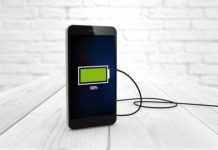One of the main innovations in Galaxy S7 and S7 Edge is their batteries which capacity is more on 18% and 40% respectively in comparison with their predecessors. The last year’s devices were highly promoted by all the points except the battery’s work. Let’s see, whether Samsung could solve this problem this year.</p> </p>
Every test was made thrice and the result was the average rate of these tests. In these tests “the youngest” model took part – Exynos (model number SM-G930F) and also its variant on the base of Snapdragon (model number SM-G930V) of Verizon Wireless. The last one is distributed with pre-installed apps of its operator which can slightly cause the waste of charge. Every device was tested with the identical brightness of the display and in the same conditions.</p> </p>
Wi-Fi</hTable of Content</p></p>
- </li></ul></div></h2></body></html>
Table of Content</p></p>
- </li></ul></div></h2></body></html>







